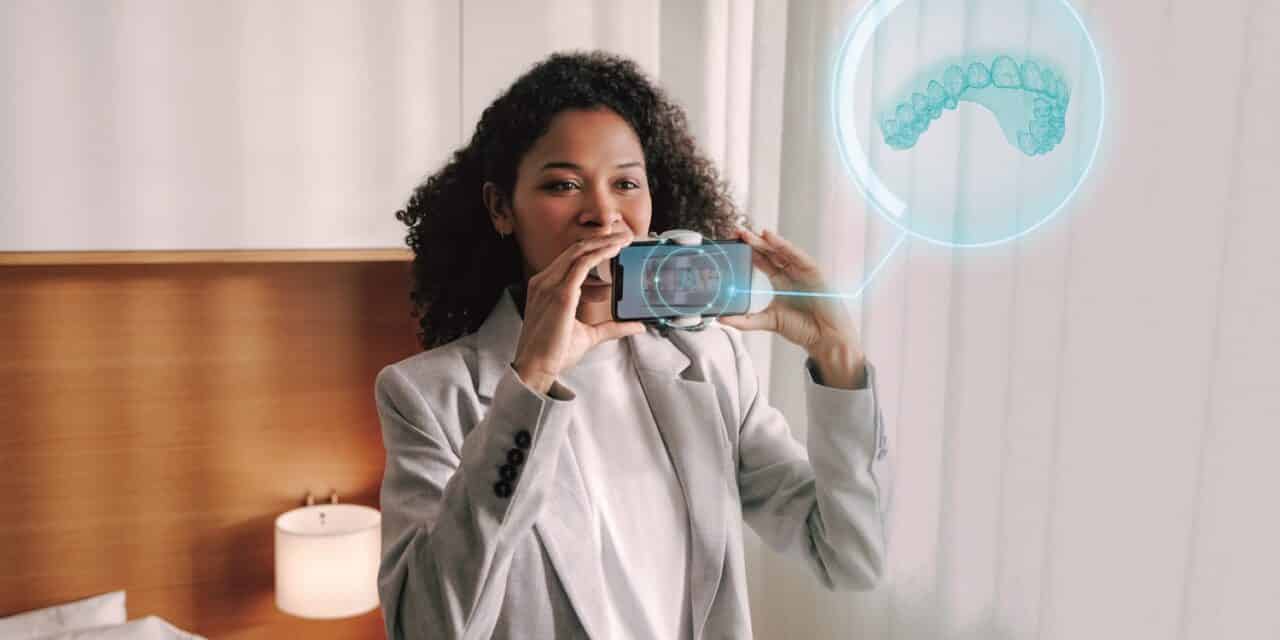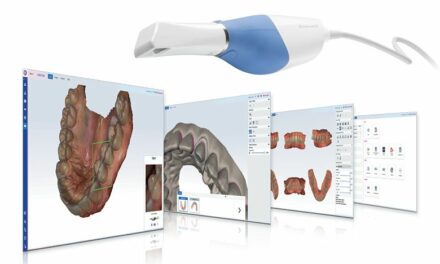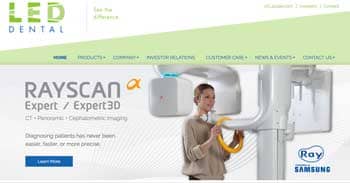Learn how SmartSTL enables your practice to remotely acquire a 3D model of a patient’s teeth, without an additional in-person visit, bringing efficiency to retainer, refinement, and relapse cases.
By Leon Klempner, DDS, and Amy Epstein, MBA
In the rapidly evolving landscape of orthodontics, technological advancements continue to reshape the way practitioners approach patient care. With SmartSTL Scans, DentalMonitoring has taken a giant leap forward, giving orthodontists a tool that will streamline practice workflows, enhance patient outcomes, and even make your accountant happy.
Let’s break down why SmartSTL technology from DentalMonitoring is such a game-changer for orthodontists. We will delve into the intricacies of SmartSTL, its myriad applications, and firsthand experiences from orthodontists who have employed it, detailing the influence this technology has had on both their practices and patients.
What is SmartSTL?
It wasn’t too long ago that the average orthodontist couldn’t even tell you what an STL file was, much less what it was used for.
“We had heard of DOC, PPT, and PDF files, but STL was new and outside our normal vernacular,” said Barry Benton, DMD, MSD, an orthodontist with two practices in Alabama.
Benton, a beta-tester for SmartSTL with DentalMonitoring, said that as the industry has digitized, the orthodontist’s knowledge of technology has had to keep up with the times.
“From then to now, STL files have grown in use and our understanding of them has moved STL file types from obscurity to mainstream,” he said. “Most orthodontists use an STL file in some capacity every single day. Pretreatment records, aligner treatments, and retainer fabrication all utilize STL files in the modern orthodontic clinic.”
Now, DentalMonitoring has evolved the technology once again, introducing the SmartSTL to the orthodontist’s arsenal.
Put simply, SmartSTL presents an efficient solution enabling your practice to remotely acquire a 3D model of a patient’s teeth, without an additional in-person visit. This file, when paired with an initial scan, facilitates the creation of new aligners for refinements or retainers.
All that’s needed is the initial intraoral scan file, and either a final scan or the last active stage STL file. From there, a patient will provide, from the comfort of their home, a recent, good quality scan from their DentalMonitoring application, using their ScanboxPro. DentalMonitoring can combine these files to generate a SmartSTL file, that precisely depicts the teeth’s current position, comparing it with the original patient anatomy and anticipated treatment plan. This file can subsequently be sent to your manufacturer to produce additional clear aligners or retainers, all without necessitating another appointment for your patient to undergo another scan. Today, this workflow is seamless with Ormco Spark, uLab Systems, OrthoFx, and any manufacturer that enables doctors to access the treatment stage files,and most in-house, 3D printed aligners.
This is something that orthodontist Bill Dischinger, DMD, a DentalMonitoring provider with a practice in Lake Oswego,Ore, had been thinking about for a while.
“We have these pictures we’re getting every week from DM and it would be great to just generate new STL scans from them,” he said. “Lo and behold they already had it and they were looking for doctors to beta test it. I said, ‘Absolutely!’”
Obviously, in order to take advantage of SmartSTL, an orthodontic practice must be a DentalMonitoring client as the technology is integrated into the remote monitoring workflow. There isn’t much of a learning curve to add SmartSTL.
“If you’re a DentalMonitoring provider, it’s basically point and shoot,” said Dischinger. “It’s a simple concept with huge implications in terms of patient convenience, practice marketing, and cost savings.”
The Three Rs of SmartSTL
There are three core applications for SmartSTL technology in treatment cases where we feel orthodontists will find the greatest benefit: retainers, refinements, and relapse management. Let’s explore each of these applications in detail to understand the breadth of SmartSTL’s capabilities. In every case, there is an opportunity to offer greater convenience to patients, allowing you to reduce the number of visits and to manage treatment remotely in ways that you were never able to before.
Alyssa Carter, DDS, MS, a Texas-based orthodontist, is a DentalMonitoring provider who also participated in the beta-test of SmartSTL. She can attest to its convenience, pointing out the direct benefit the technology provided her patients.
“It allows us to easily order refinement aligners, appliances, and retainers without an additional appointment, offering convenience to patients who have busy lifestyles or live out of town,” she said.
Retainers: A Seamless Solution
Traditionally, the process of ordering and fitting retainers has been a little onerous for the patient, requiring multiple appointments and logistical coordination. SmartSTL changes things by offering a more seamless solution to end-of-treatment appointments. Dischinger has been using SmartSTL for over a year and he says he cuts out at least one appointment per patient with SmartSTL and DentalMonitoring.
“Usually we will take a scan and order the retainers,” he said. “Then the patient comes back to another appointment for us just to hand them their retainers.”
It’s a little anticlimactic, says Dischinger, when patients have to return to the office just to get their final retainers. With SmartSTL, he gets the scan from the patient, orders retainers, and then asks the patient to come in. In addition to saving time, the final appointment is more of an event for the patient with treatment finally completed.
“It turns into more of a celebration appointment,” said Dischinger. “This is more of an all-in-one appointment and a bigger event.”
Refinements: Precision and Efficiency
SmartSTL technology can play a pivotal role in mid-course corrections and refinements, eliminating many additional visits during the treatment process. SmartSTL will utilize the stage files that delineate the intended position of the patient’s teeth throughout treatment. This data is complemented by DentalMonitoring scans from the patient, captured at various stages of the treatment. Integrating these files provides orthodontists with a comprehensive understanding of the patient’s progress and allows for proactive adjustments when deviations from the treatment plan are detected. From that data, a SmartSTL file can be created.
One of the key advantages of SmartSTL is the reduction in the number of visits required for assessment and adjustments. Orthodontists no longer need to rely on in-office scans to assess if the patient has gone off track. SmartSTL minimizes disruptions to the patient’s treatment plan by streamlining the refinement process. With access to stage files and DentalMonitoring scans, orthodontists can efficiently create refinements and adjustments as needed, ensuring that the patient’s treatment stays on course without delays or interruptions.
With DentalMonitoring, a doctor is already tracking progress, getting alerts on deviations from the treatment plan, and managing compliance. Combined with the data from SmartSTL, orthodontists can plan refinements before the patient’s visit, cutting down on unnecessary appointments and saving valuable time for both the patient and the practitioner.
With DentalMonitoring and SmartSTL, you eliminate the need for unnecessary conversations and call-backs about progress since orthodontists can seamlessly incorporate refinements into the treatment plan without the patient even knowing they have gone slightly off course, especially if it’s through no fault of their own.
“SmartSTL allows doctors greater versatility and limits the interruptions orthodontic treatment can have in a patient’s lifestyle,” says Benton. “The ability to generate an accurate, up to date STL file remotely allows doctors to provide a higher standard of care while simultaneously allowing the patient to maintain their lifestyle by minimizing inconvenient in-office visits.”
Additionally, the eco-friendliness of SmartSTL is worth noting, especially for practices with self-printing capabilities. Orthodontists can print aligners and refinements in batches, optimizing material usage and reducing waste when a refinement is needed. This sustainable approach aligns with modern practices’ efforts to minimize environmental impact while delivering high-quality care to patients. (Think of all the plastic that doesn’t end up in a landfill.)
Relapse Management: Proactive Care
SmartSTL extends its benefits to relapse management as well, allowing orthodontists to proactively address any post-treatment tooth movement. By combining initial intraoral scans with DentalMonitoring scans and the last stage file of their treatment, practitioners can detect relapse early and take corrective measures without requiring the patient to visit the office. Using the SmartSTL, the orthodontist can create a short treatment plan, have relapse aligners manufactured and get the patient back to their original retention position.
Regular check-ins every couple of months not only enhance the overall value of the treatment for patients but also present an opportunity for orthodontic practices to establish a recurring revenue model in retreatment cases. By incorporating these check-ups into the patient’s ongoing care plan, practitioners can monitor oral health, track post-treatment progress, and address any emerging issues promptly. This proactive approach not only improves patient outcomes but also creates a pathway for monetization over the long term.
“SmartSTL has simplified the process of capturing missing scan data, and the data needing to retreat patients,” said Carter. “Patients receive continuous care regardless of their location or lifestyle.”
SmartSTL Helps Close The Gap
With DentalMonitoring an orthodontist already has the ability to remotely monitor a patient’s progress, keeping up to date on compliance and receiving alerts when teeth aren’t moving as planned.
In the past, that meant bringing the patient in for new scans and then again to pick up aligners, making it impossible to treat a patient unless they were within driving distance of the practice. A mid-course correction or a refinement always meant a new scan was needed and that meant an in-person appointment, disrupting the clinic and the patient or parent’s workday. SmartSTL eliminates that, opening up a new way to treat patients virtually.
“It really stresses patients out if they move and have to switch orthos,” said Dischinger. “With SmartSTL, they don’t have to.”
Dischinger cited a case where his patient had to move to Hong Kong for business. “He started here and didn’t want to stop treatment with us,” he said.
So Dischinger is using DentalMonitoring and SmartSTL to continue treatment with a patient who is over 6,000 miles away. For new aligners, the patient pays for the shipping charges. While an extreme example, one can imagine a high school senior on their way to college seeking treatment. Orthodontists used to have to break the news that the timing wasn’t right. With DentalMonitoring and SmartSTL, that’s not the case anymore.
“Patients can continue to be remotely treated by you in a very high quality fashion,” said Dischinger.
Closing the distance gap isn’t the only thing that the addition of SmartSTL can do for orthodontic practices. You can save patients a lot of time even by eliminating one or more appointments per case, also saving your practice money. A 30-minute doctor appointment ends up costing a patient over 2 hours by the time they take off work, drive back and forth to the office, and sit in your waiting room—even if you are really efficient at moving patients through your practice. Not to mention the hassle of coordinating time off work for parents and school for teenage patients. That’s over 2 hours of time for a 2-minute scan.
For orthodontists who understand the concept of value per visit this is also a huge benefit. Every unnecessary visit eats into your bottom line.
“You shorten chair time and eliminate visits by using a DentalMonitoring scan to develop STL files for retainers and course corrections in treatment,” said Carter.
If the overhead costs per visit can be calculated to just over $200, how much money does a practice stand to save per patient over the course of treatment? The answer is that it can be significant. If an average patient might require three refinements and one retainer minimum during treatment, that adds up to $800 back to your bottom line. If extrapolated out to account for all of your aligner patients, the cost savings are significant.
With DentalMonitoring alone, Dischinger estimates he has decreased office visits by 25% and doctor-required visits by 32%.
“With SmartSTL we can reduce that even more,” he said. “That’s very quantifiable.”
You can also help close the staffing gap with DentalMonitoring and SmartSTL.
“How many of you are fully staffed in your offices?” asked Dischinger. “How many are struggling to fill or replace staff, or stuck with a bad employee because you don’t have anyone to replace them with?”
Eliminating the number of patient visits means you don’t have to carry the same staff load you had to traditionally. Treatment becomes less labor-intensive and your practice can work within a smaller footprint treating the same number of patients, or more.
Smarter Marketing With SmartSTL
While the benefits of SmartSTL are evident to the doctor, after implementing the technology into your practice you need to communicate those benefits to your patients. In a busy world with the ability to have virtual meetings, food delivery from almost every single restaurant, and on-demand Hollywood blockbusters at your fingertips, SmartSTL is among the next generation of healthcare technologies, making orthodontics that much more convenient.
“Patients love it,” said Dischinger. “It’s a beautiful time saver.”
Not only does it save time, but it allows you to go beyond the traditional 10-mile radius when attracting patients. With remote monitoring, DentalMonitoring already enabled orthodontists to expand their reach but with SmartSTL, the possibilities are nearly limitless. As we saw, a patient can move half a world away and still count on a continuum of treatment from the same doctor. SmartSTL further delivers on the promise that DentalMonitoring already makes to its users, true remote orthodontics from a qualified practitioner, whether you come to the office or conduct semi-virtual treatments.
“SmartSTL opens the door for doctors to treat and manage the care of patients that are away from home for various reasons including: education, professional travel, and military service,” added Benton.
A Harvard study found that, on average, patients lose 121 minutes of their day when going to see the doctor. In the world of constant productivity, giving patients that time back in their treatment schedule is invaluable and will set you apart from your competitors.
In-office visits should never disappear completely, of course. It’s proven that patients want to know their orthodontists and discuss a treatment plan with them but making that experience more convenient for your patients is a key differentiator between a next generation practice and one stuck in the past.
“We have to adapt,” said Carter.
Having DentalMonitoring with SmartSTL gives patients just one more reason to pick your practice over your competitor.
“We have to listen to what our clientele is telling us,” said Dischinger. “We have to meet them in a place of convenience.”
About the Authors

Leon Klempner, DDS, and Amy Epstein, MBA, are co-founders of People + Practice, an orthodontic marketing agency on a mission to unveil the abundant opportunities for orthodontic practices to thrive by implementing digital marketing strategies, technology, and services that fuel practice growth. They also host The Golden Age of Orthodontics podcast, dedicated to highlighting the most innovative technologies and approaches in the industry. To schedule a complimentary consultation or to learn more, visit pplpractice.com.










